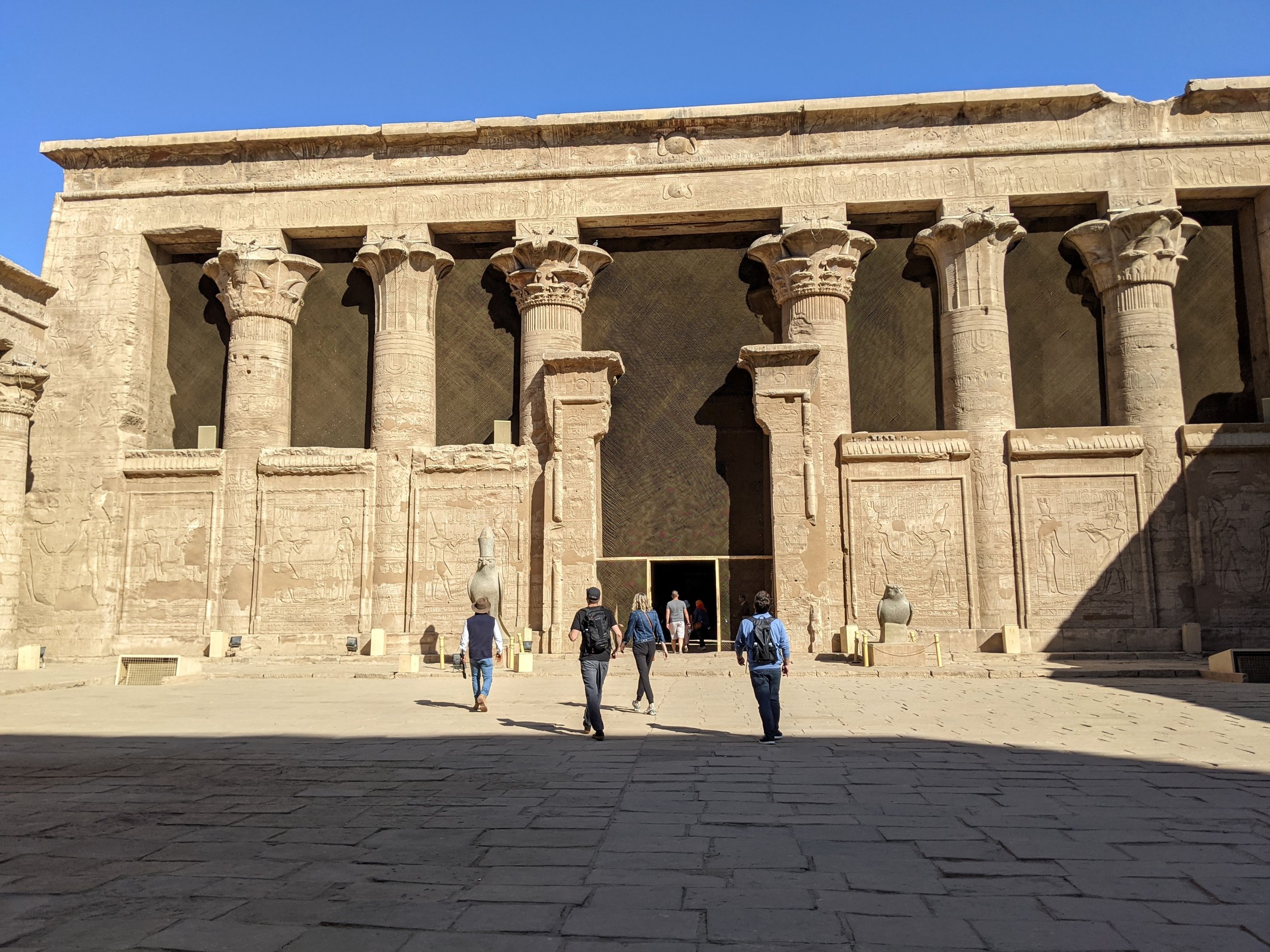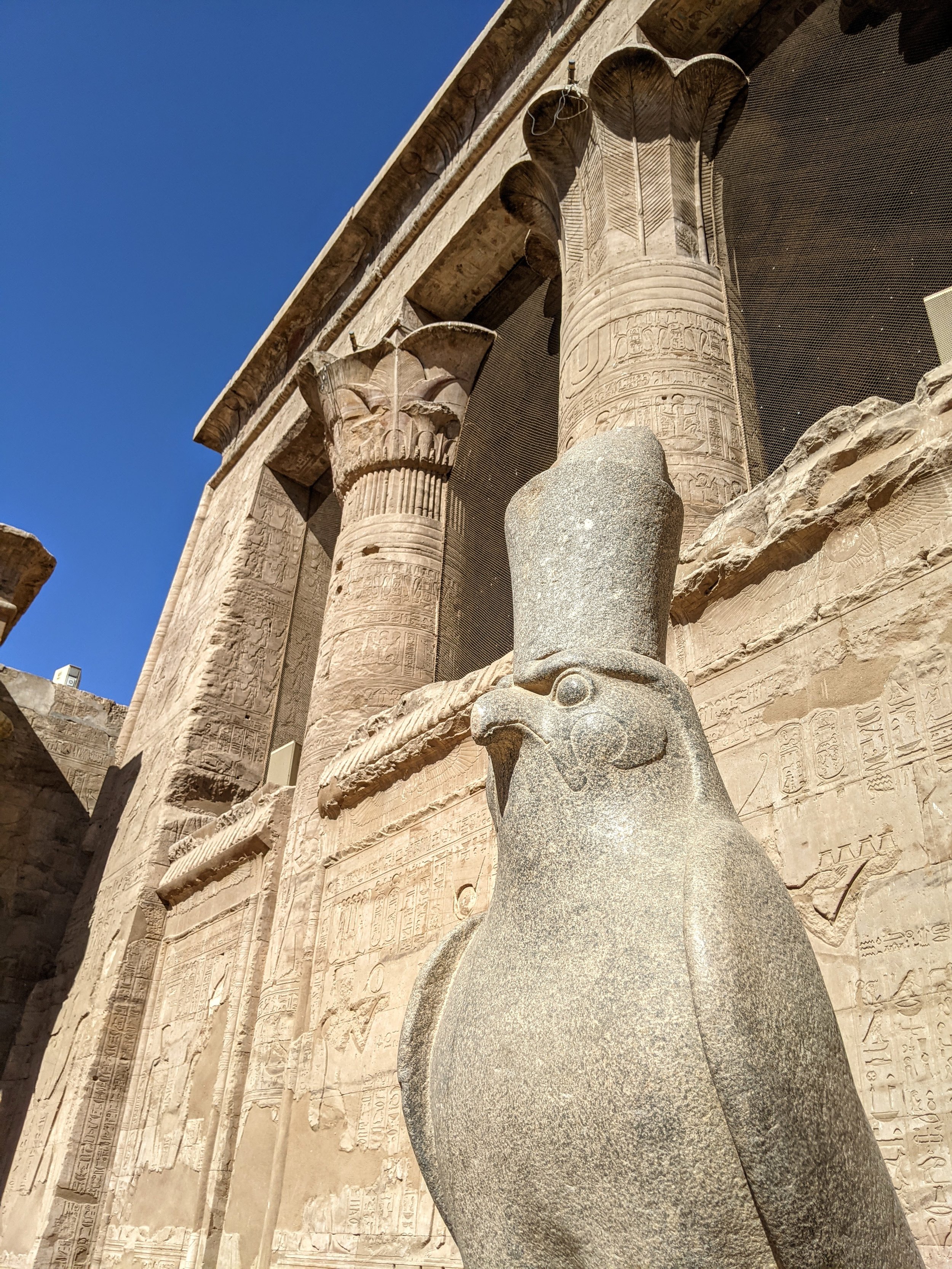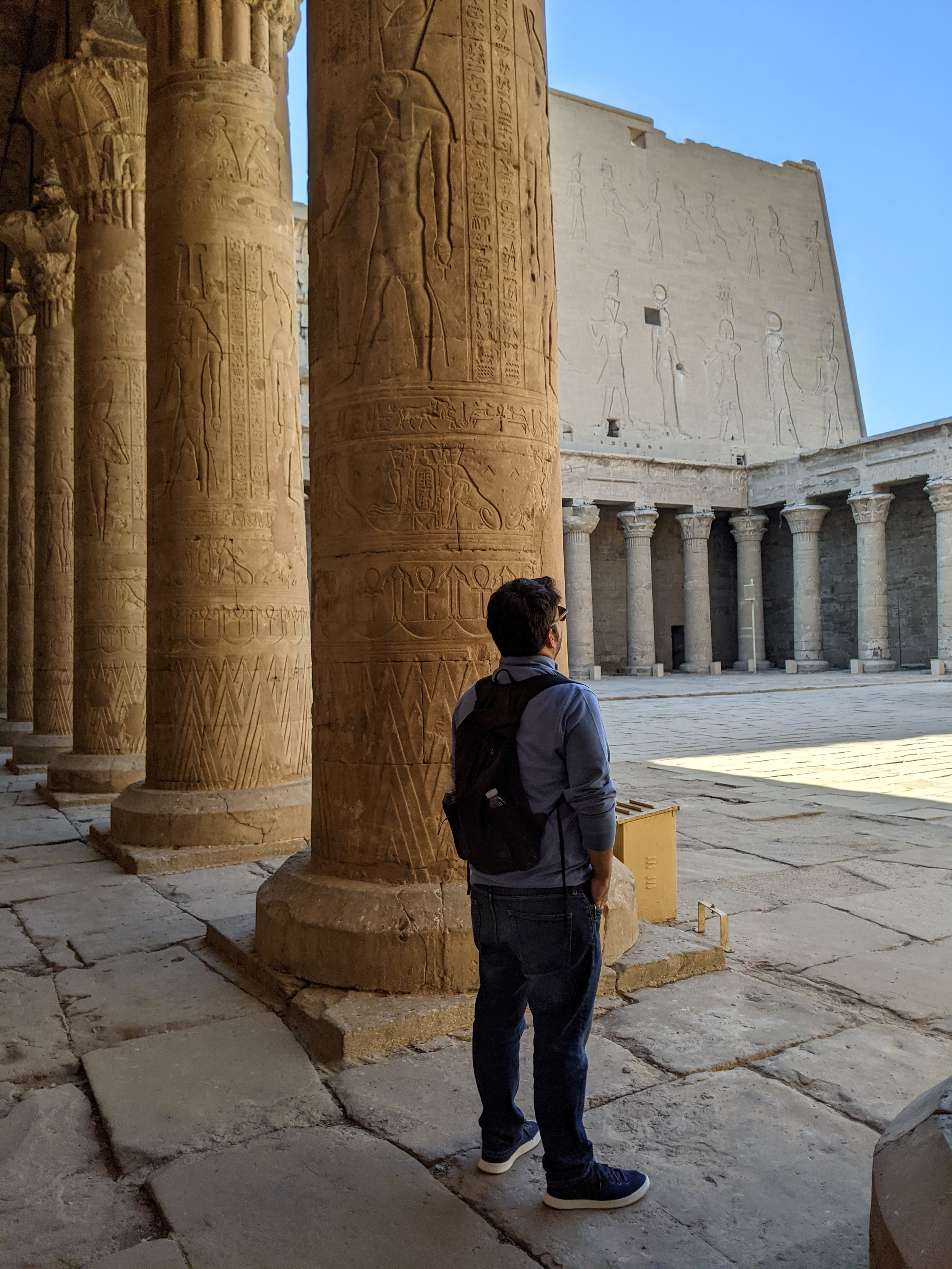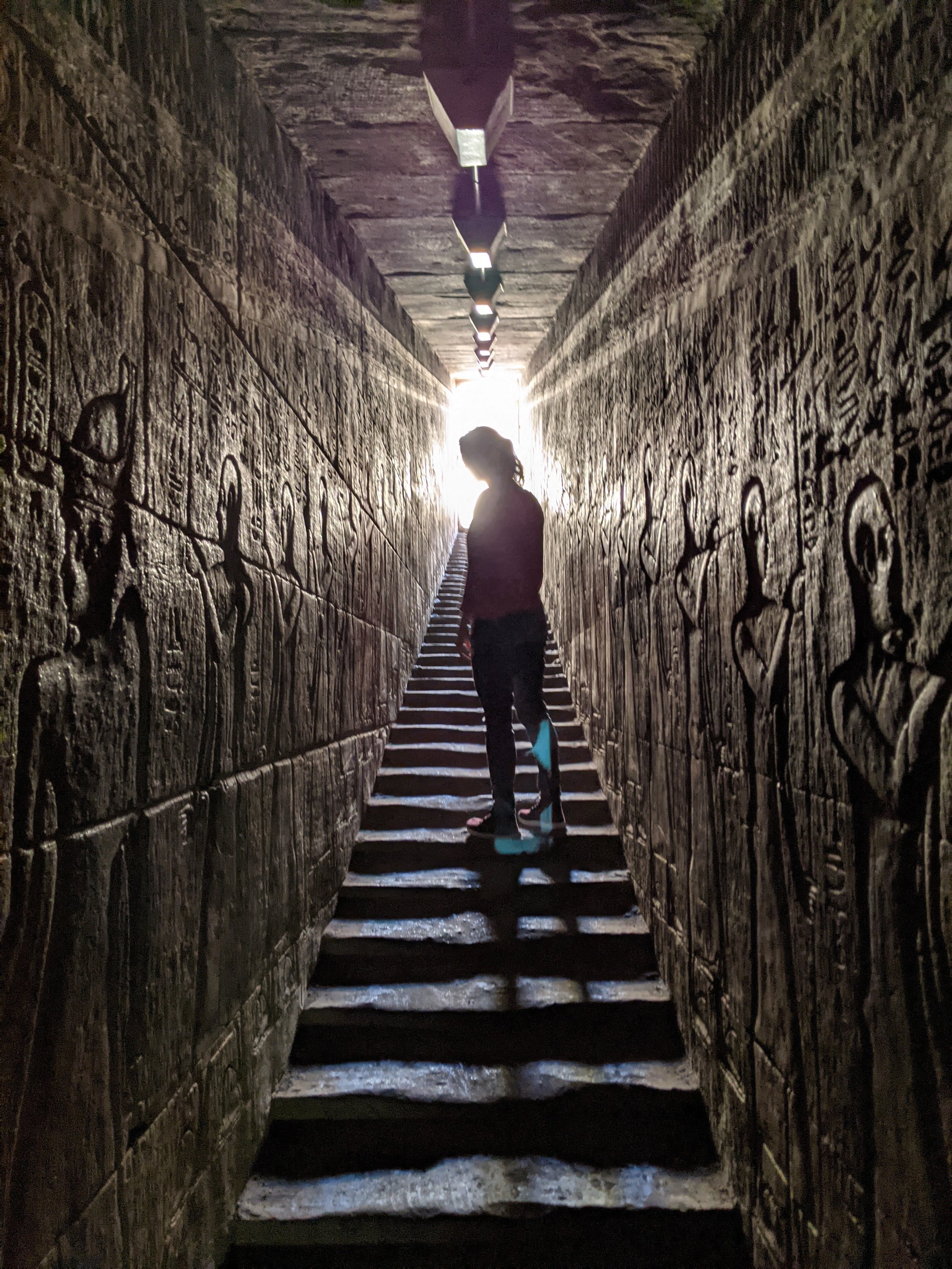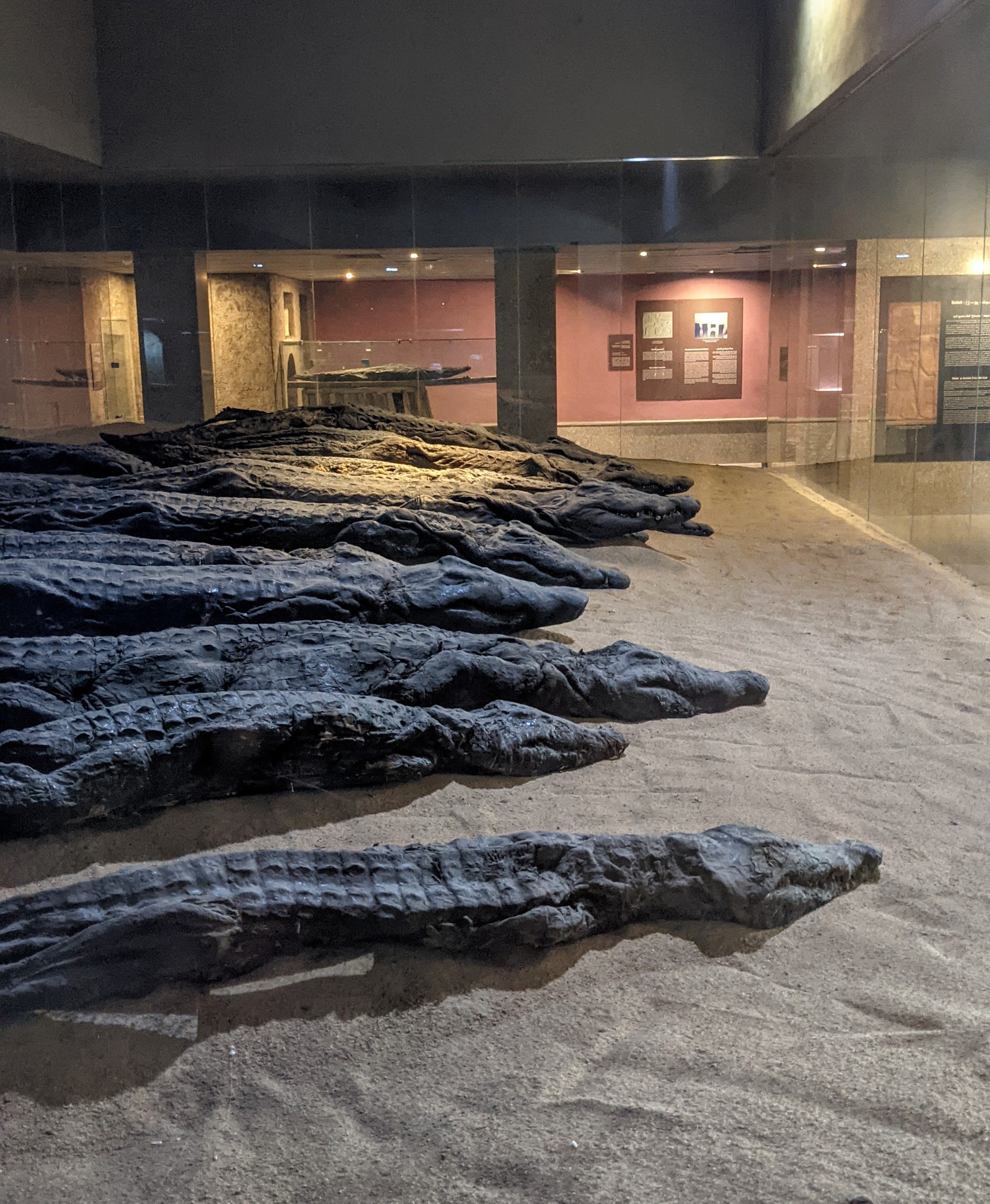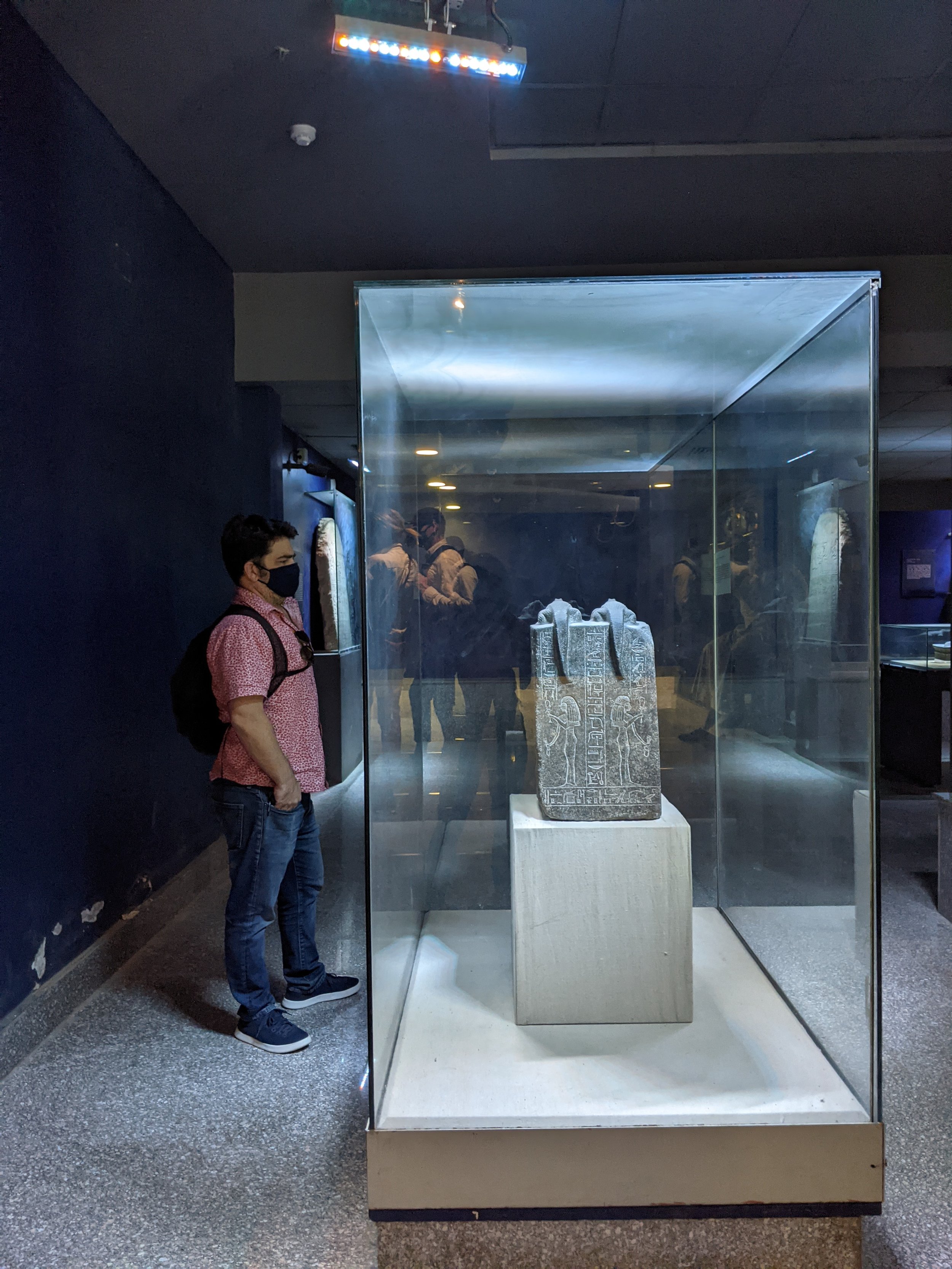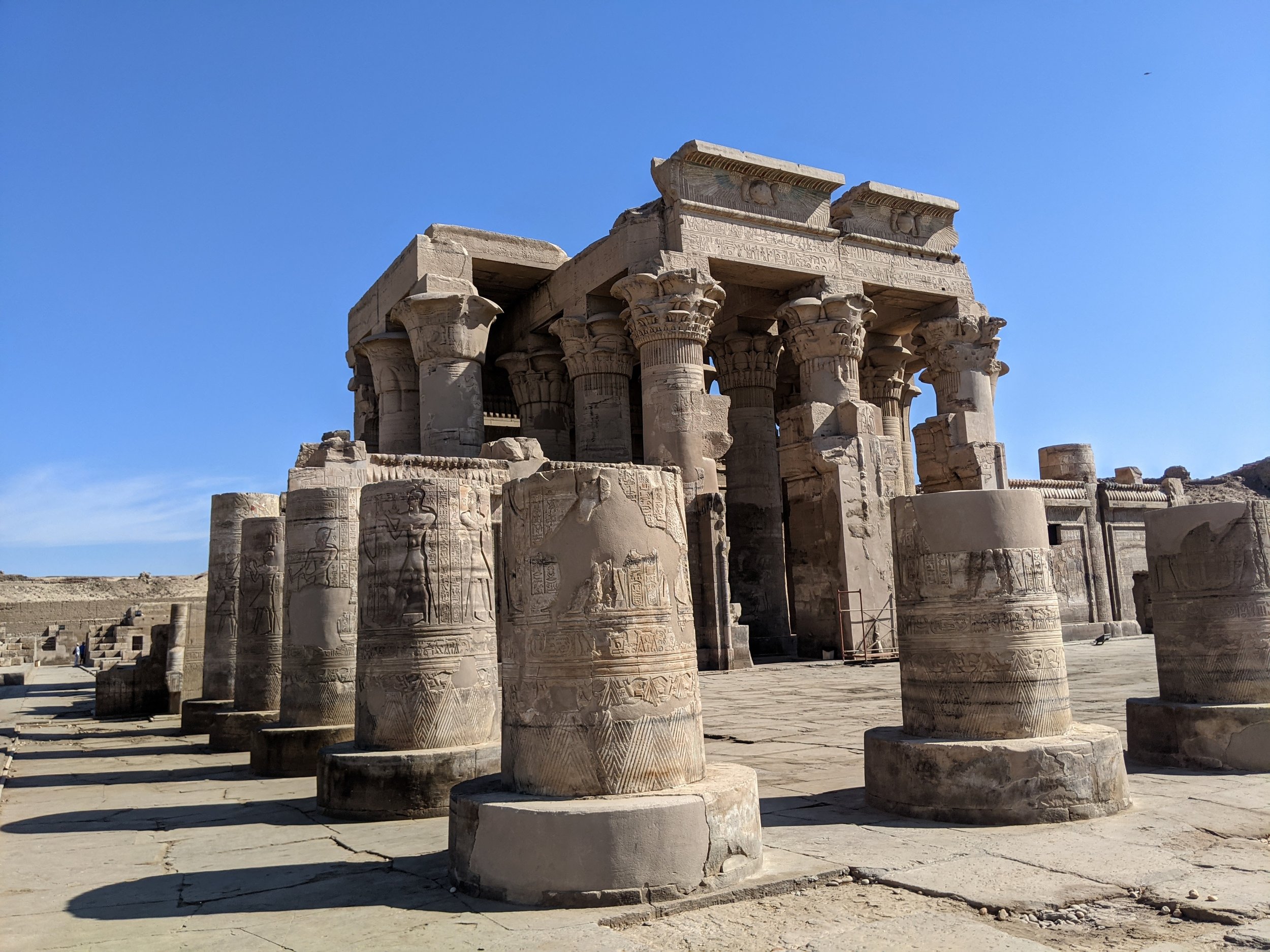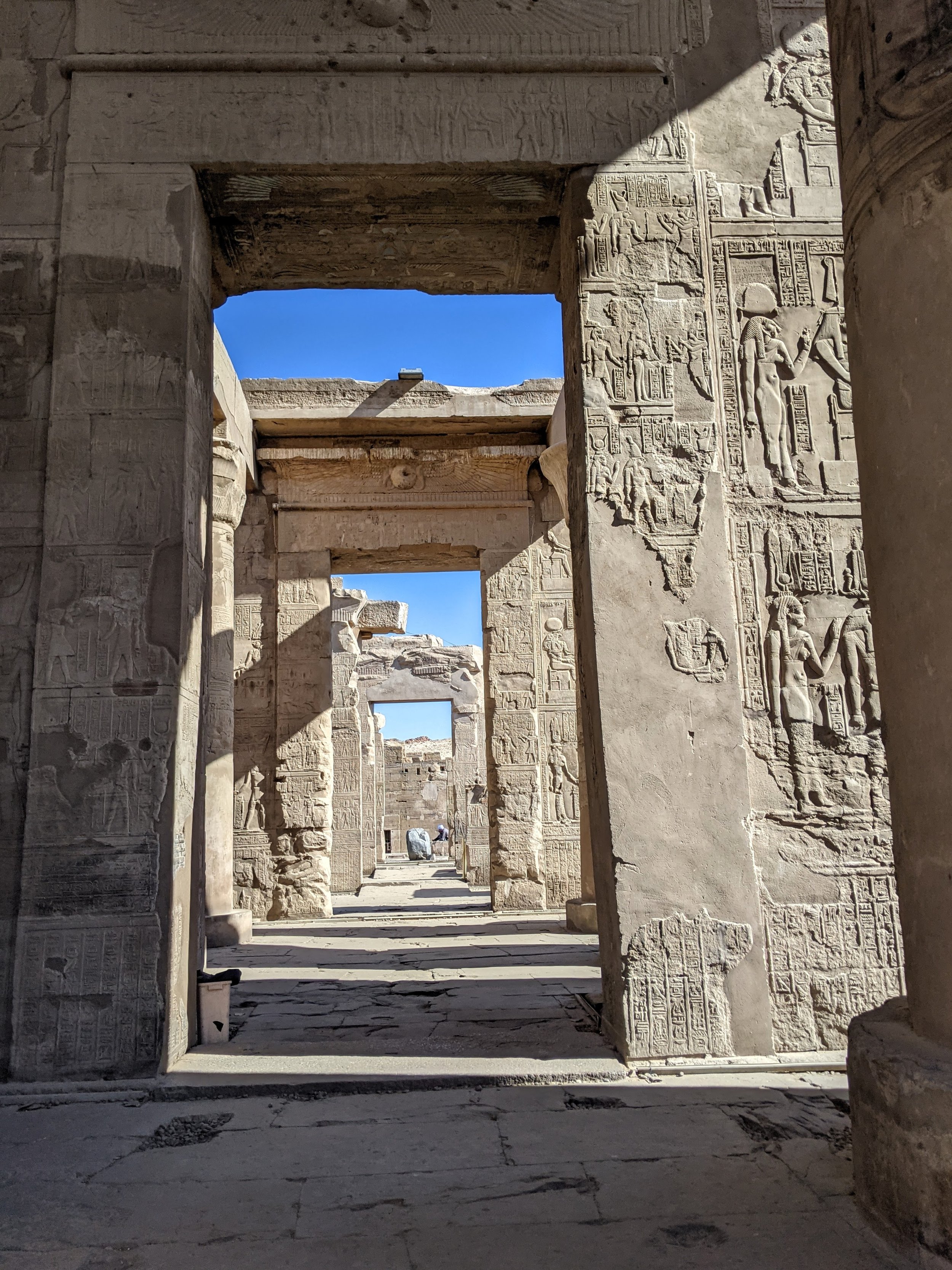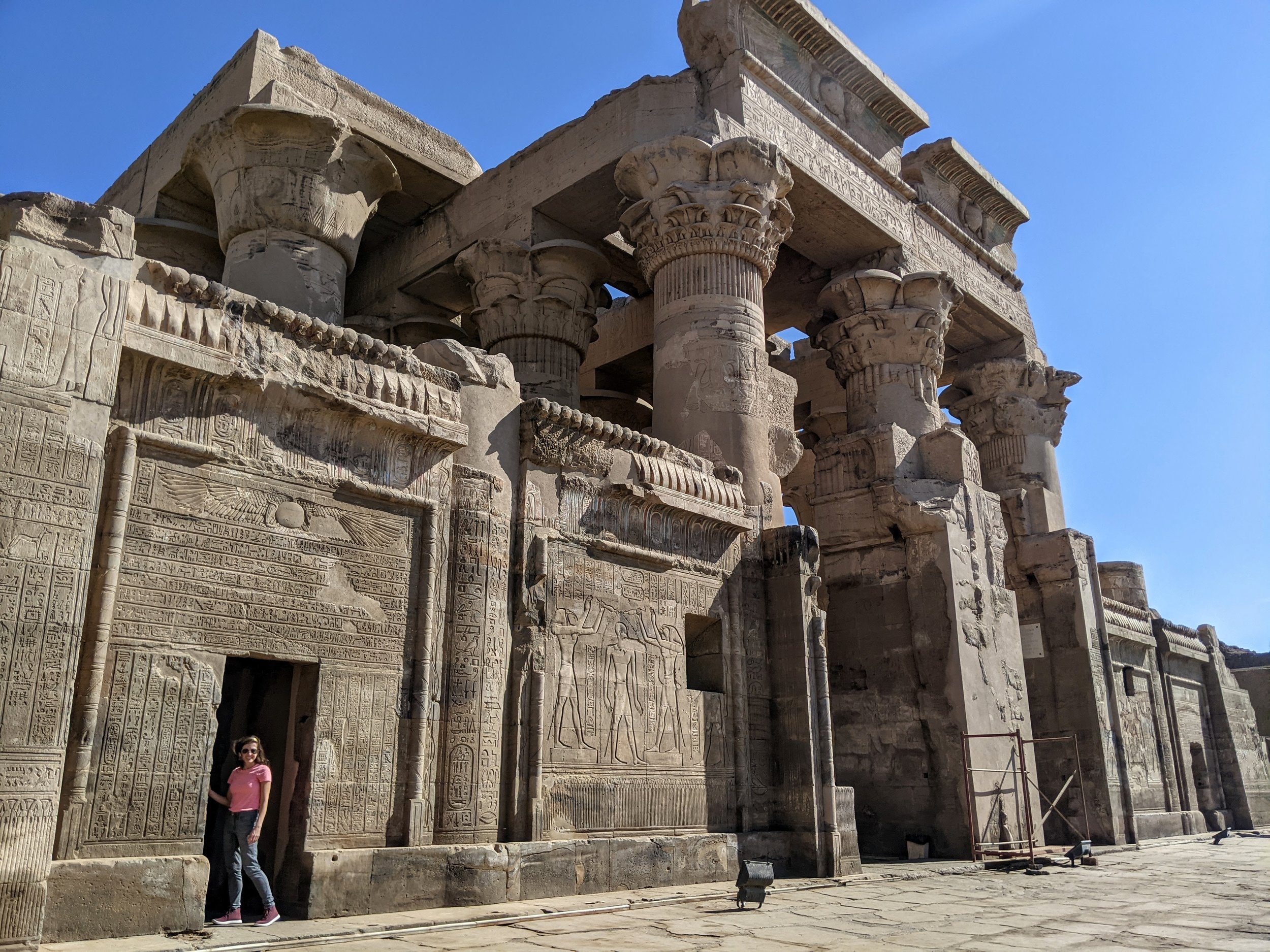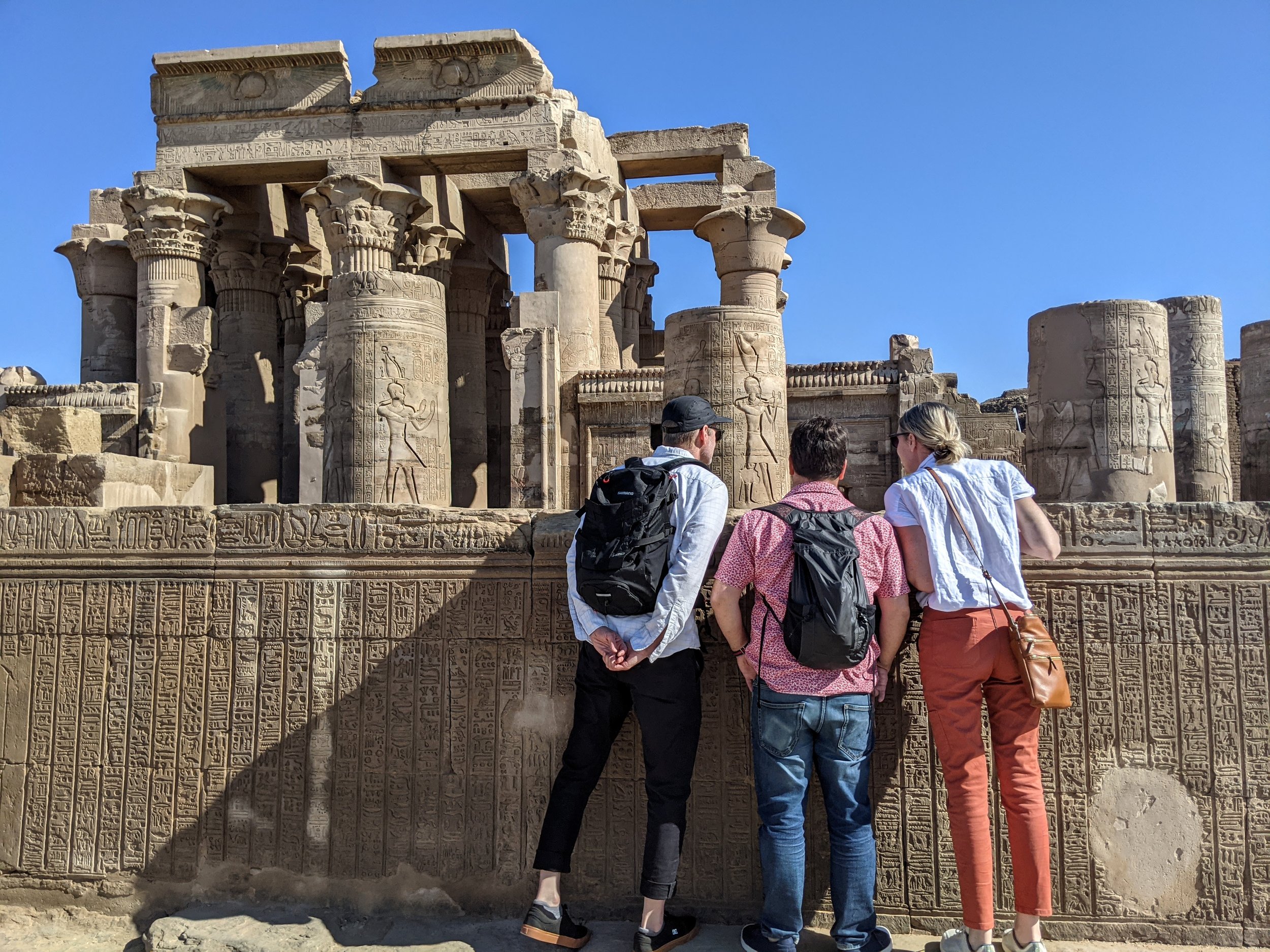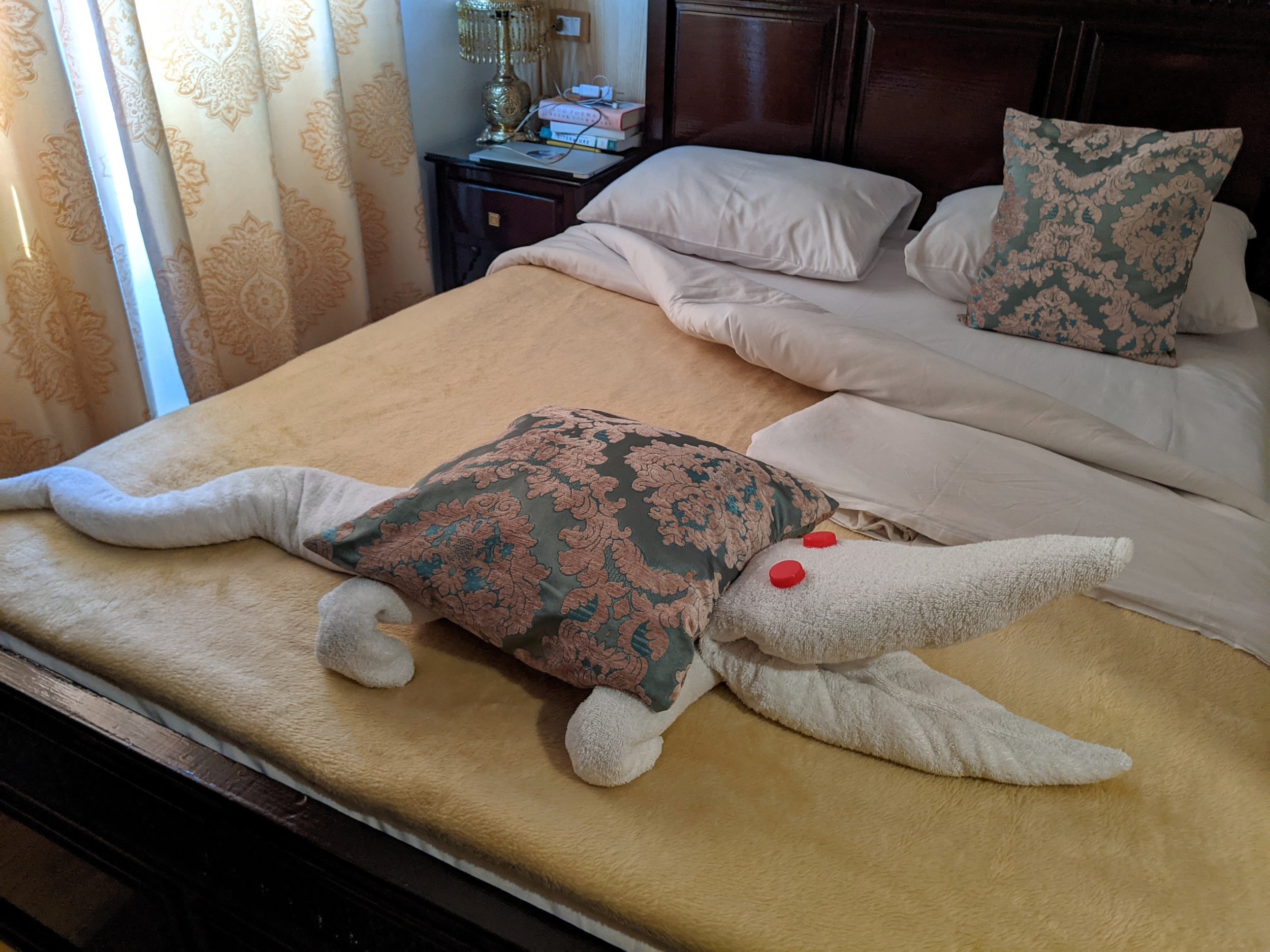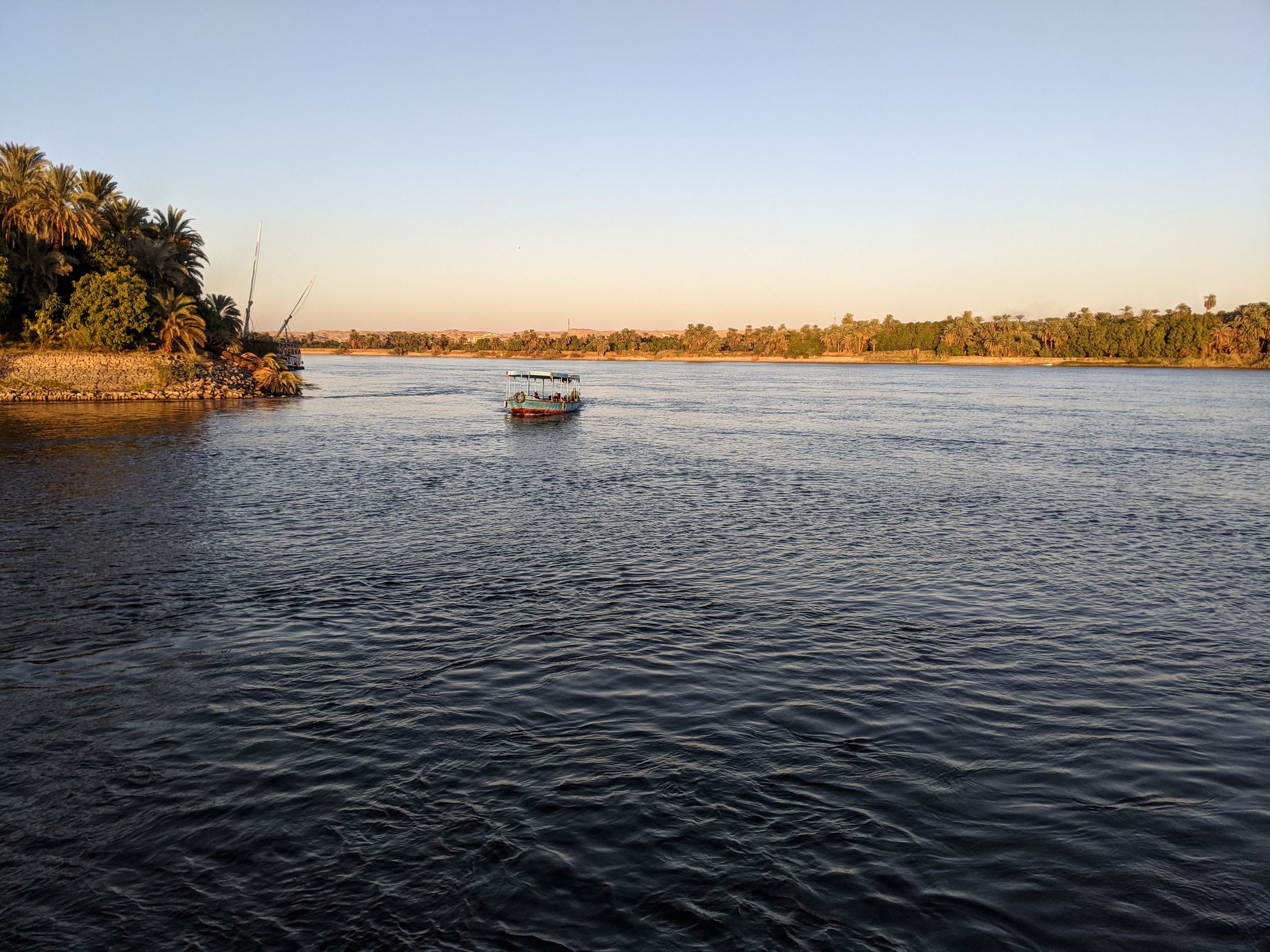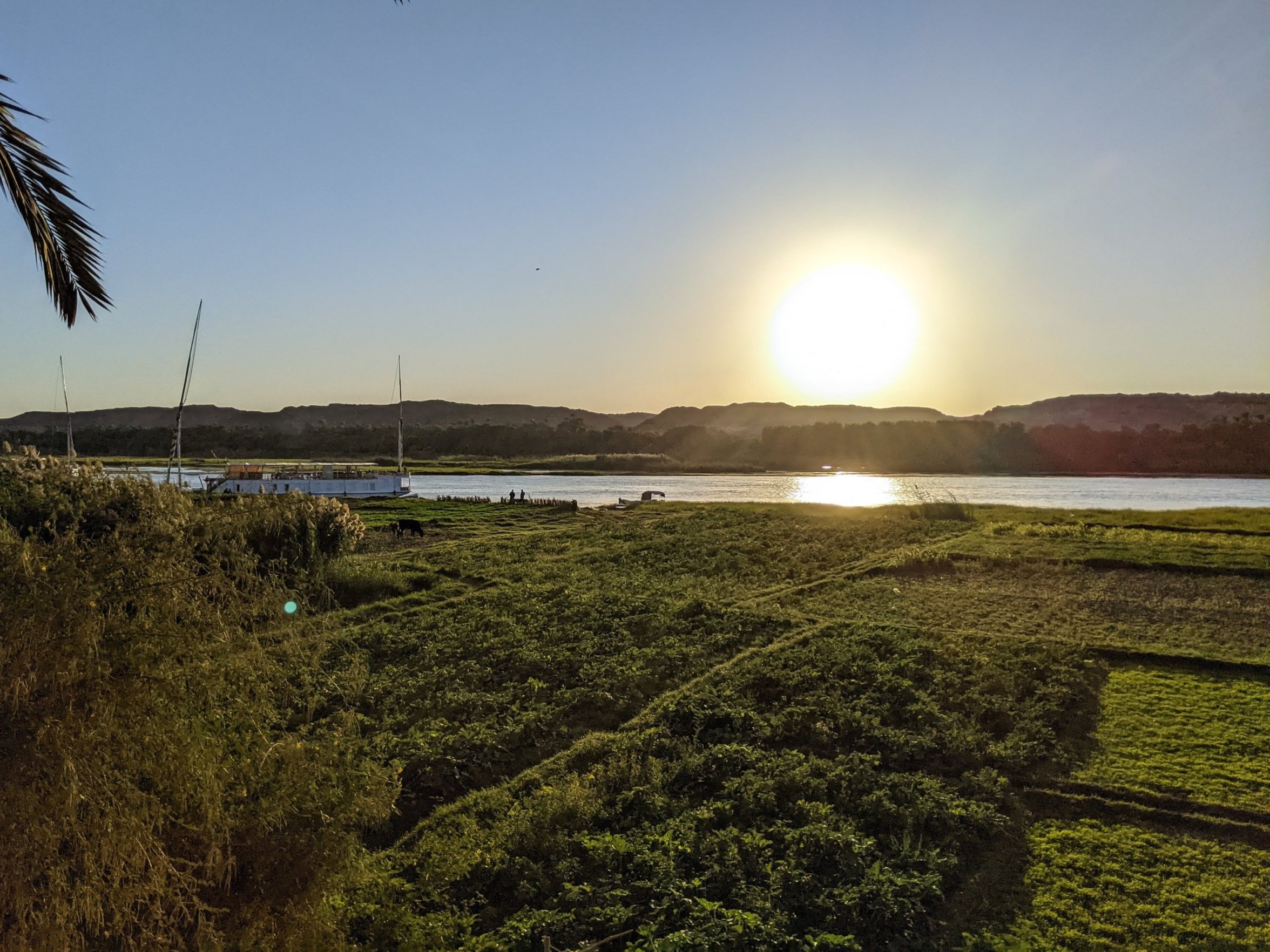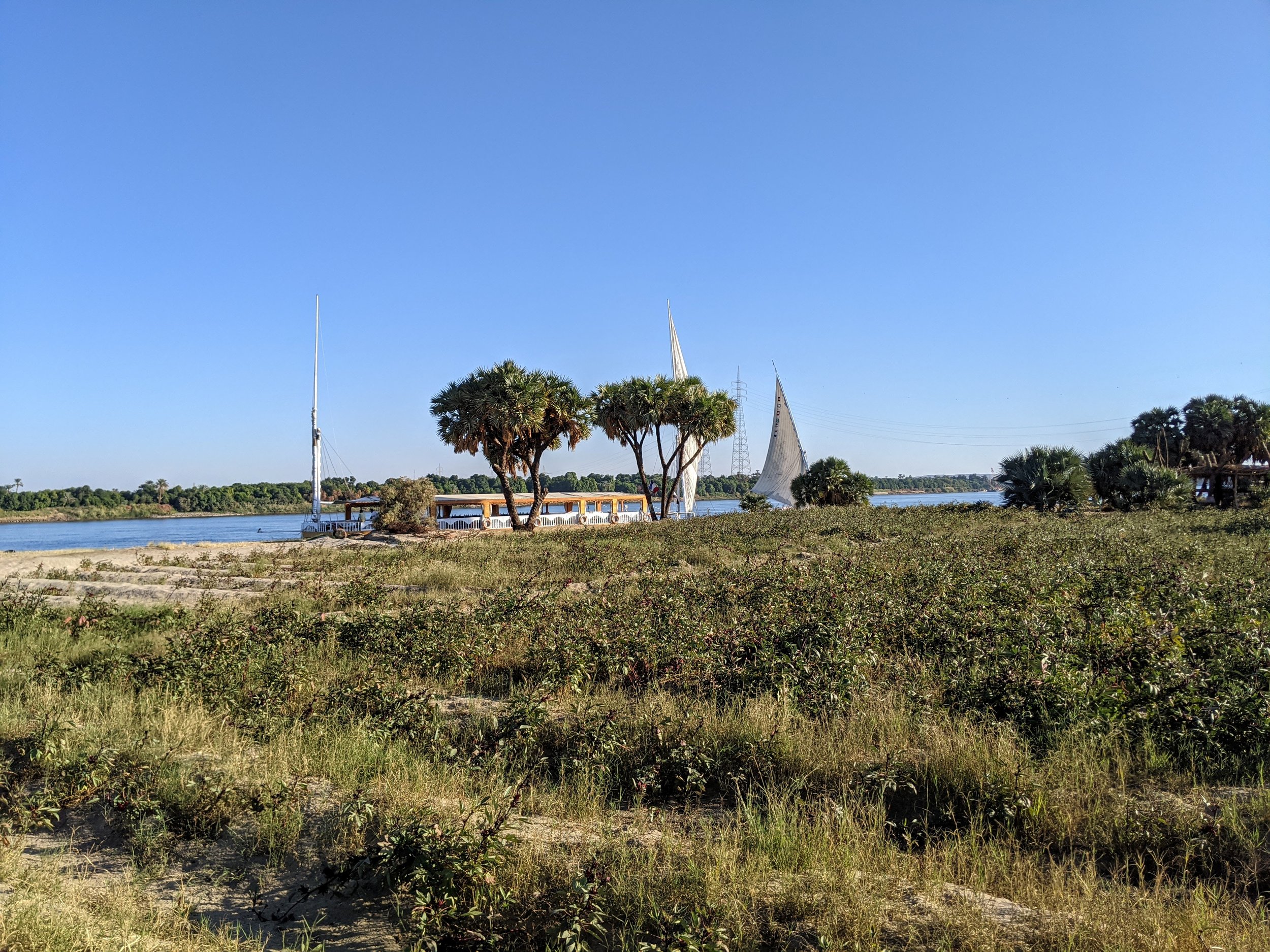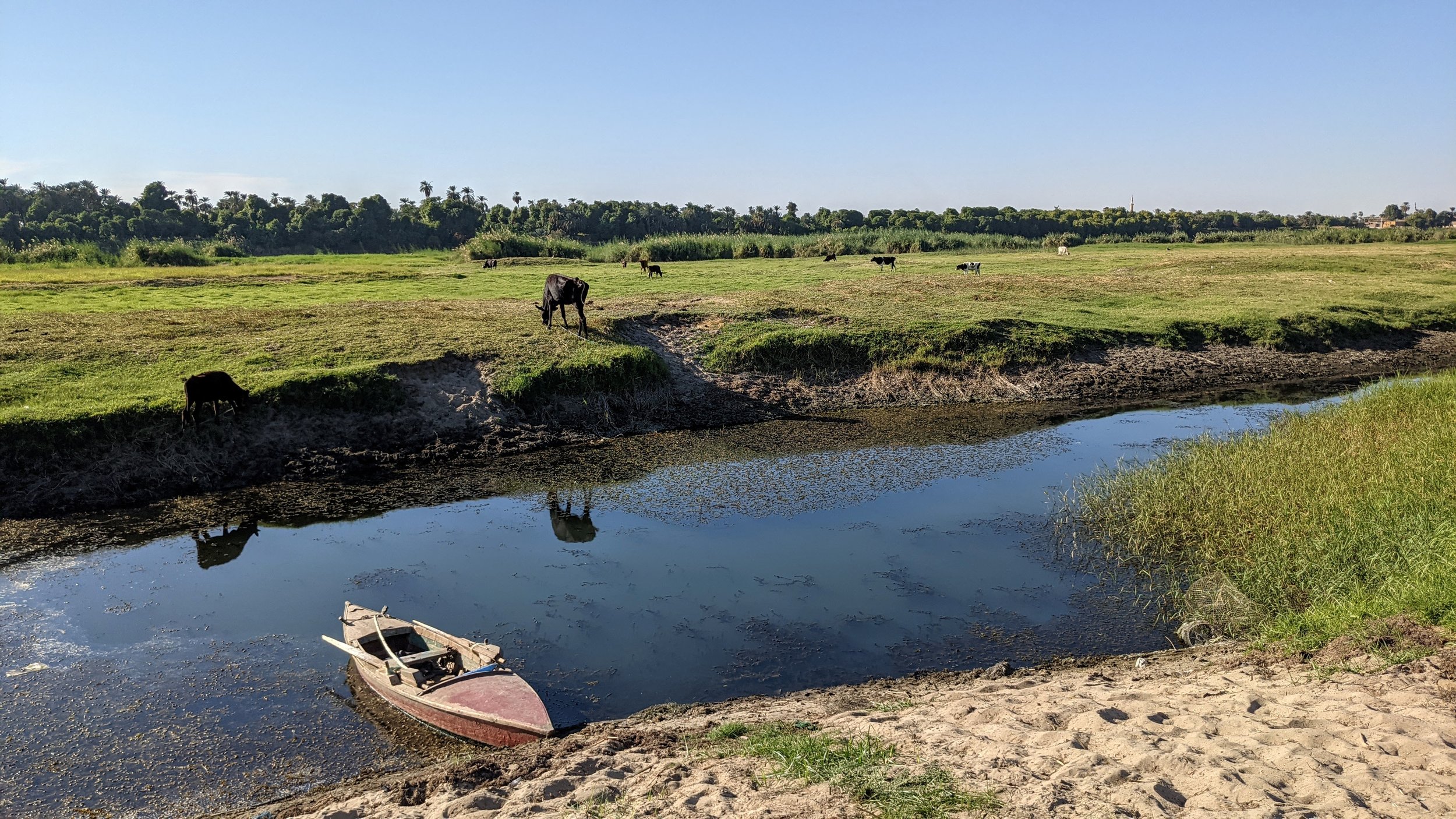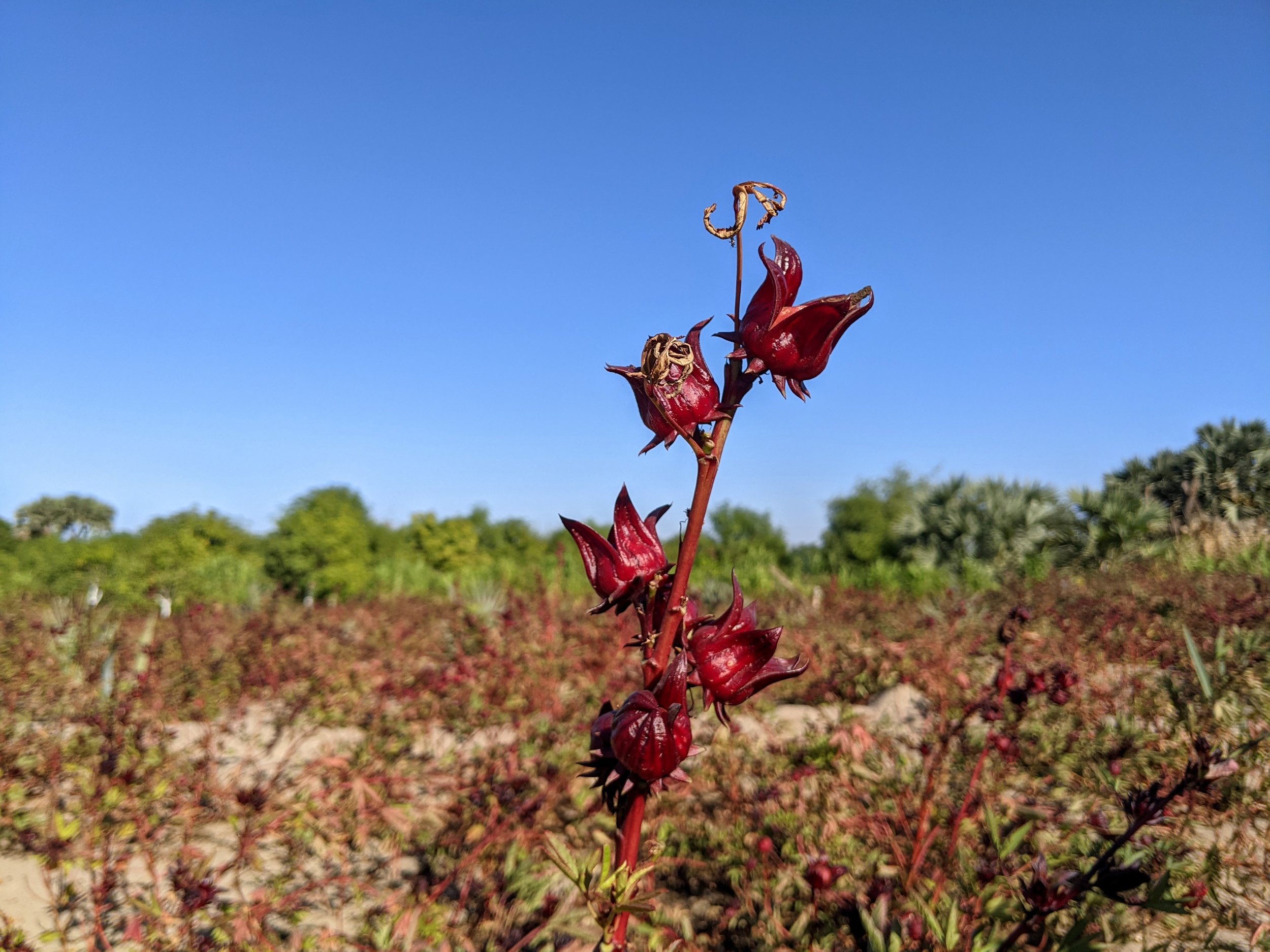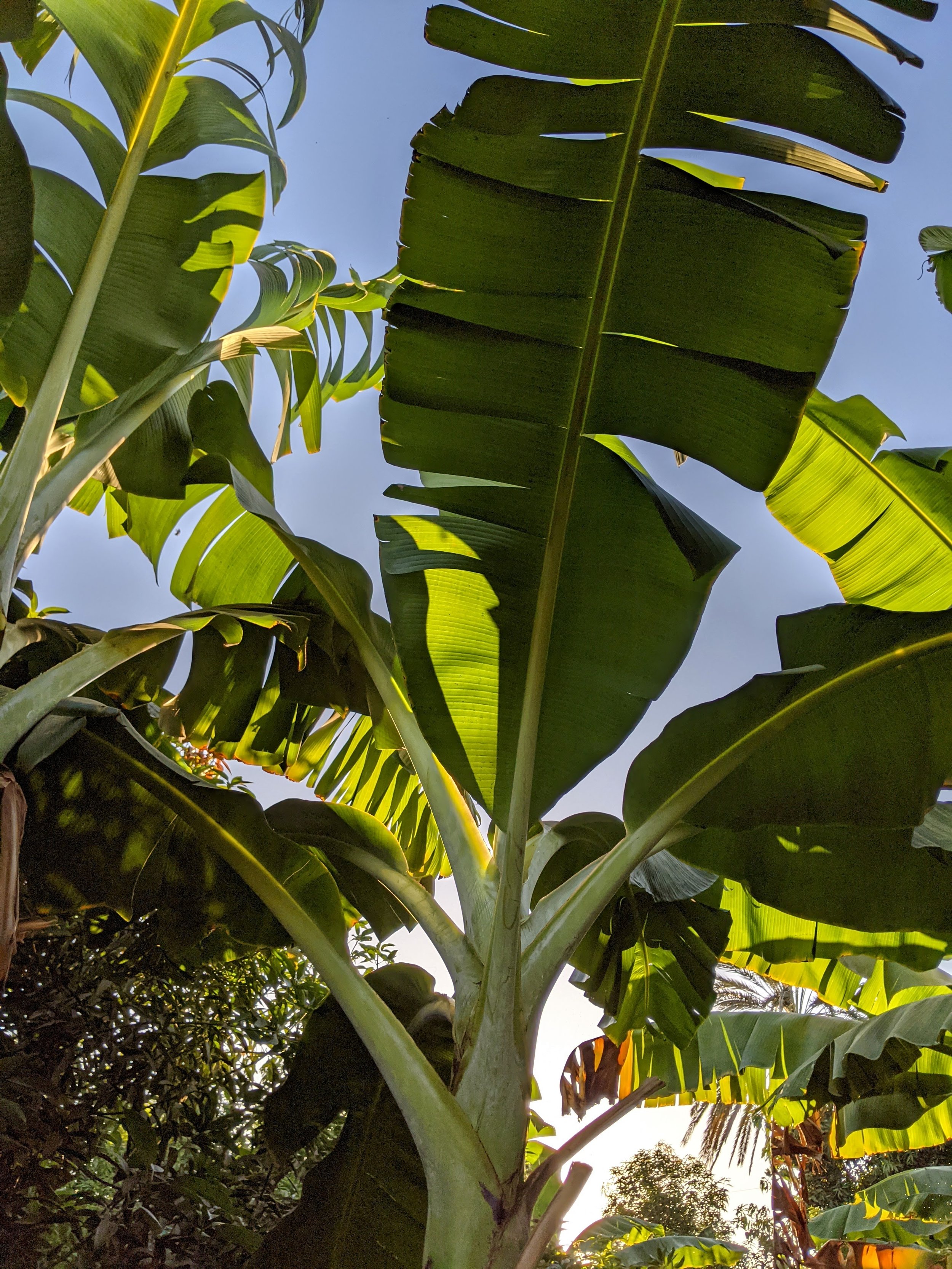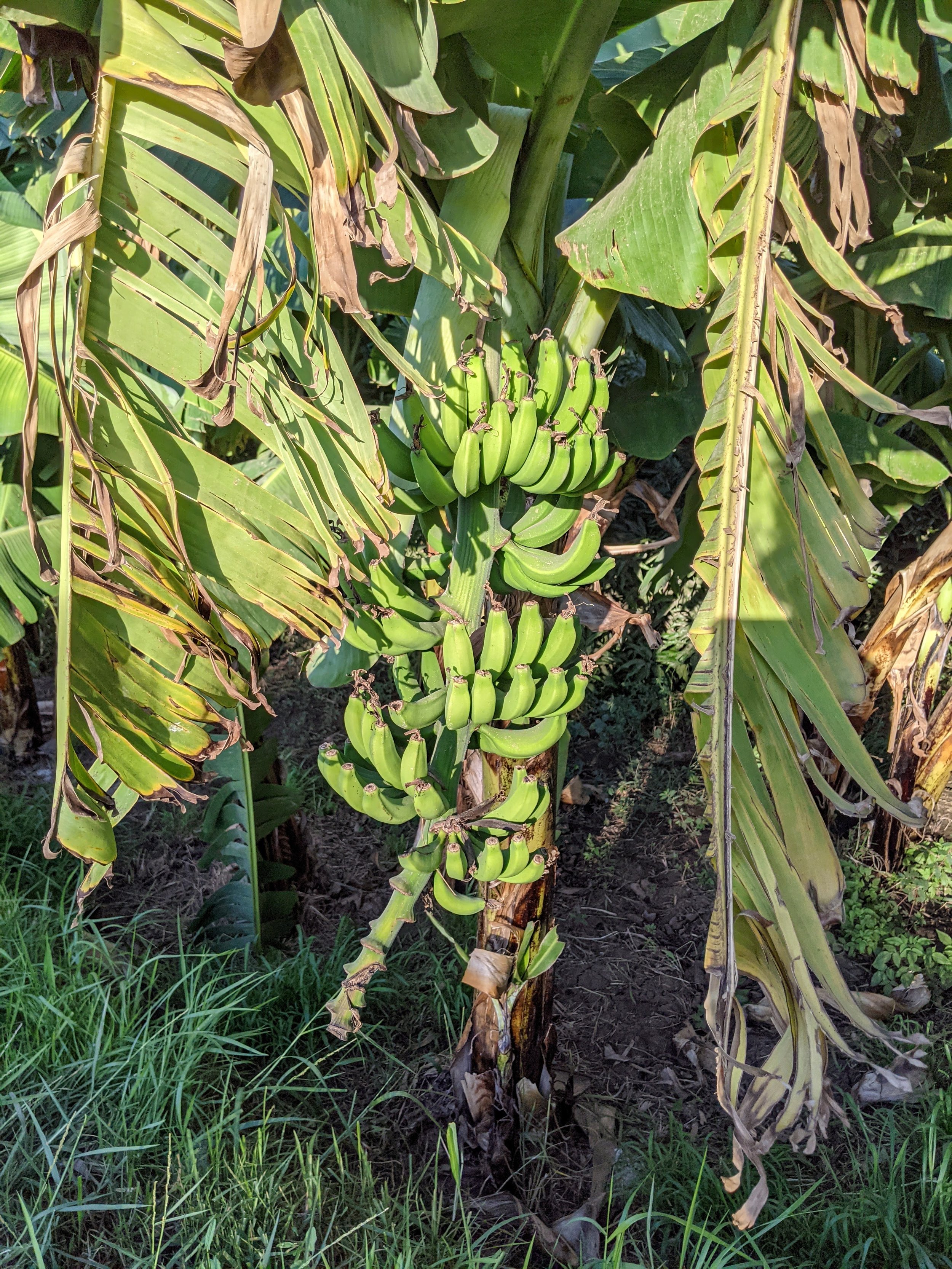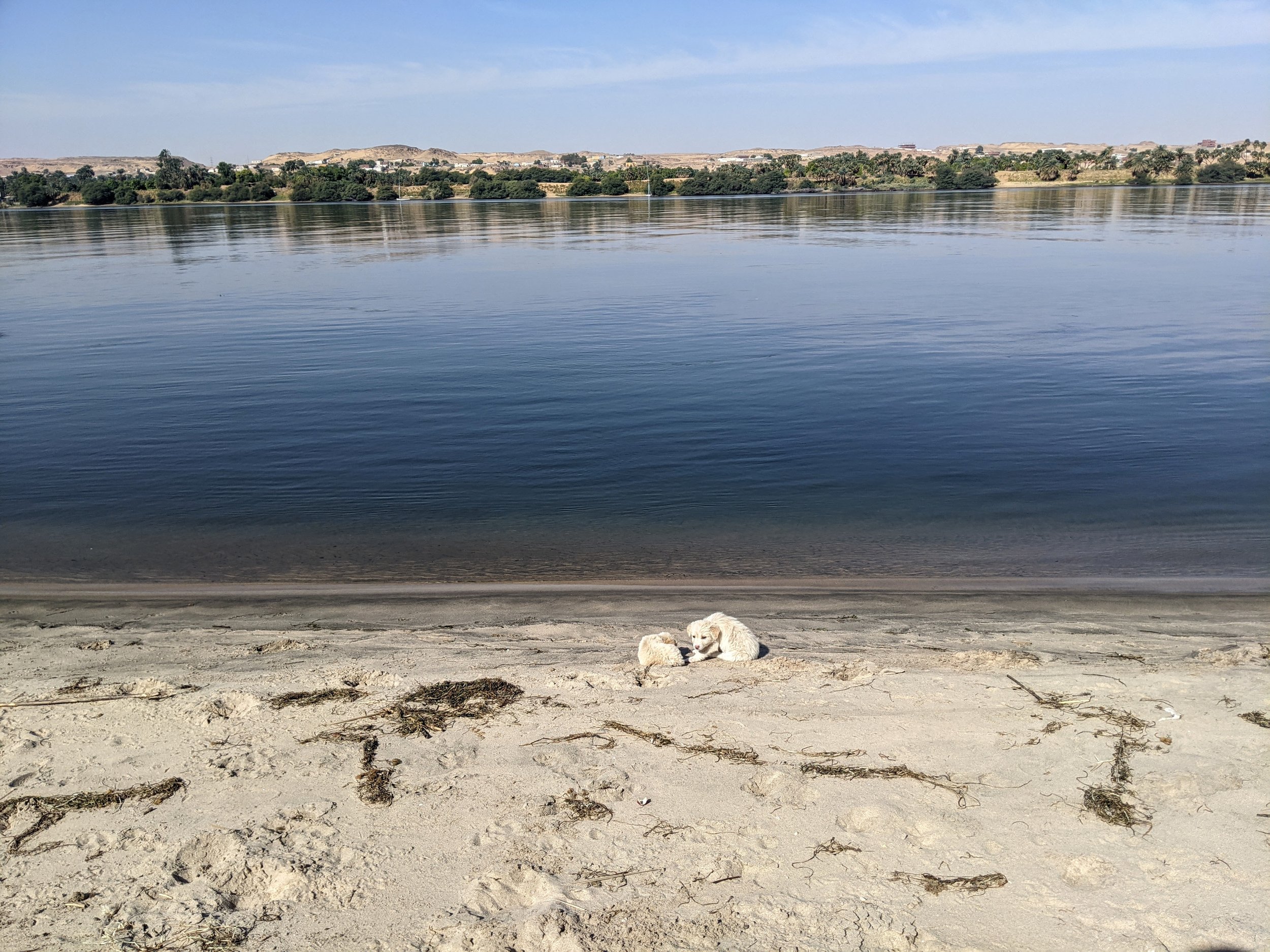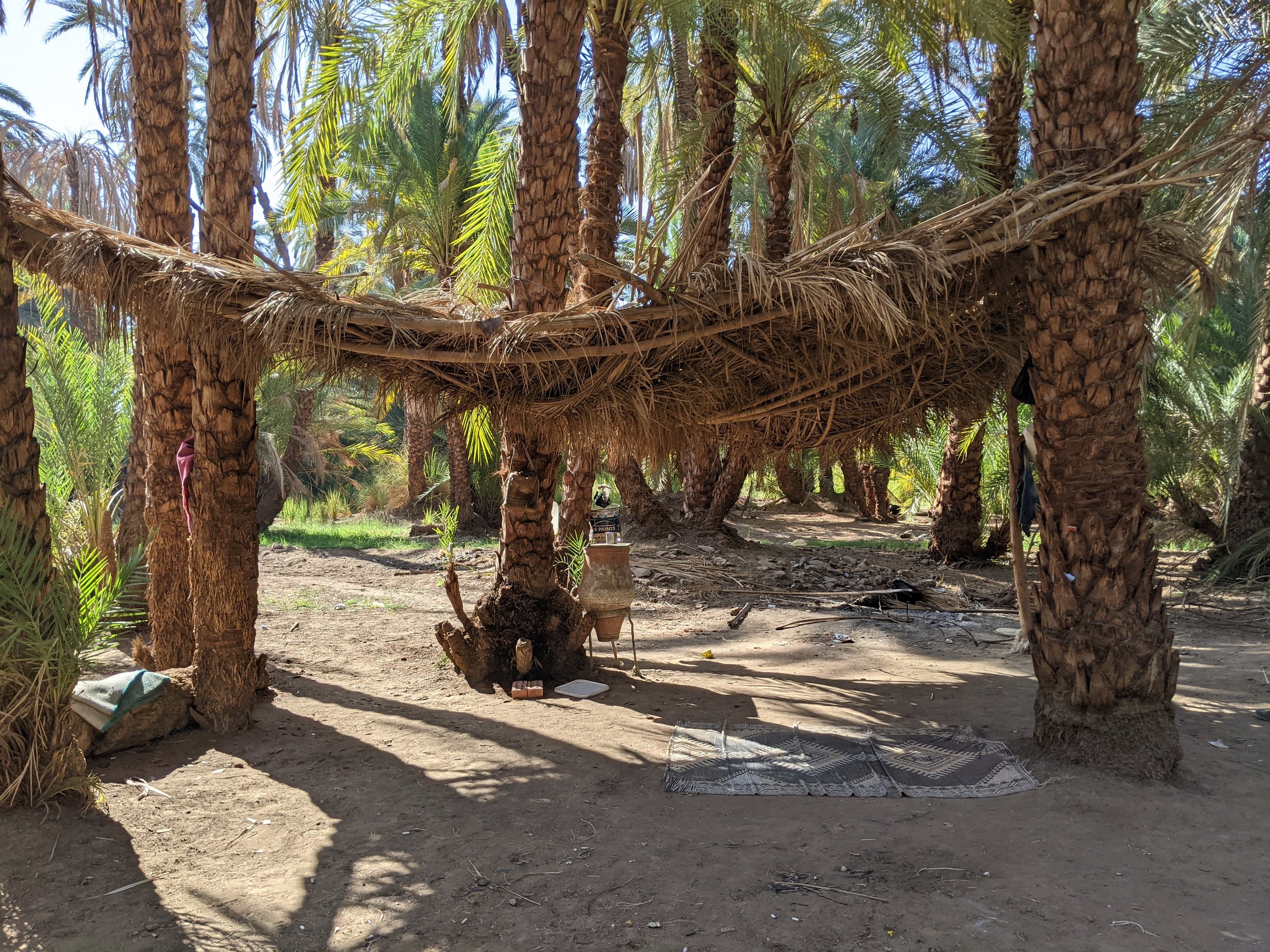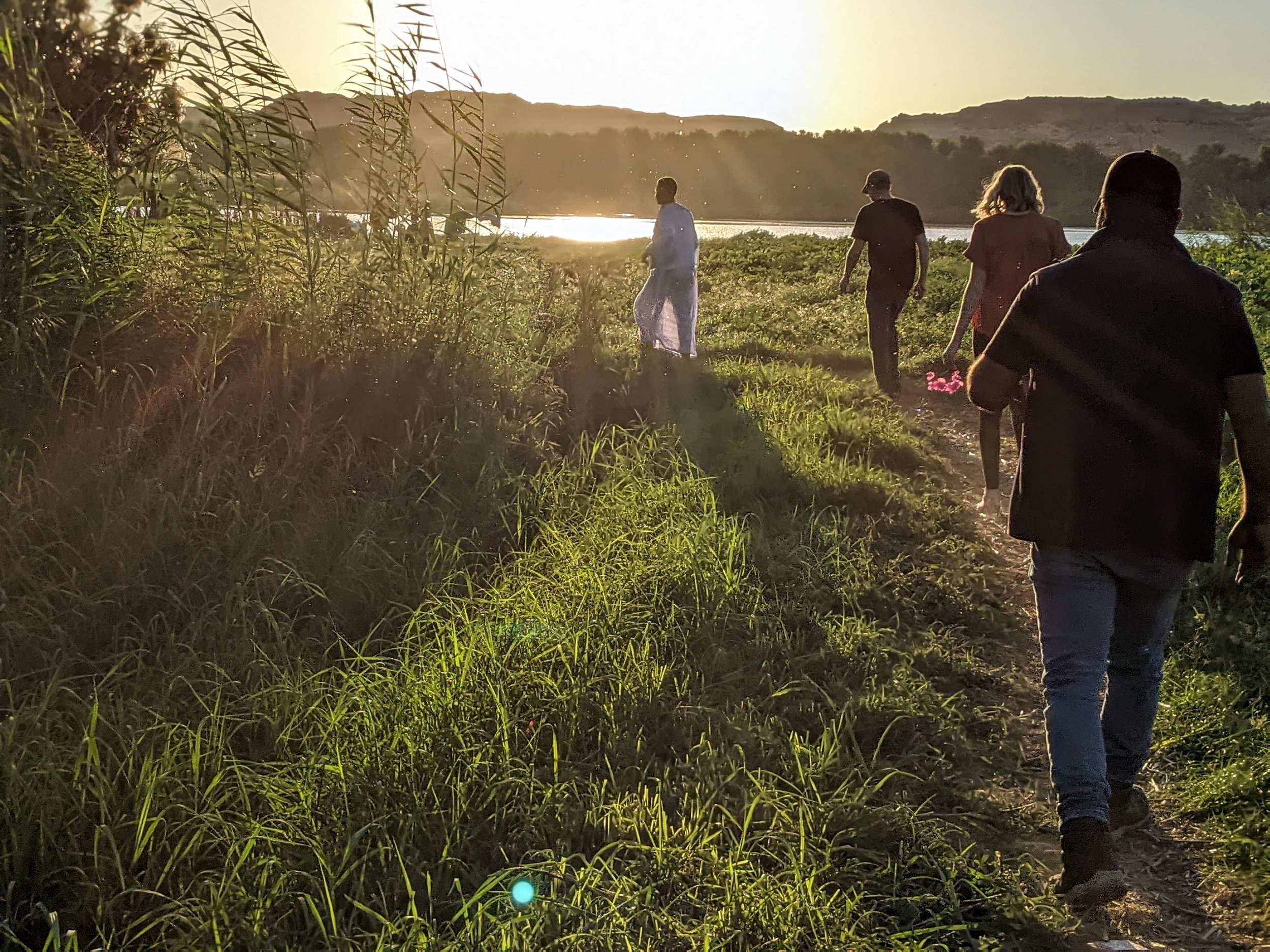cruising the nile
My dear friend,
At several points over the past few months, C. has remarked upon my seeming inability to, as he puts it, “relax.” It’s true that the two times we visited the Red Sea, I lugged along my laptop and took frequent breaks from the beach in order to conduct Zoom calls or edit documents in a hot, bright airbnb. It’s true that at the end of the workweek, when all C. wants is to read a novel in peace on the balcony, I’m usually arranging snacks and guidebooks in a backpack so that we can spend our Saturday trekking through some new museum. And it’s also true that during the spring semester, when I returned to campus in Minneapolis while C. stayed in Cairo, he parted from me at the airport with the words: “I hope you don’t spend all your time working.”
Now, if there were ever a place to relax, it’s on a dahabiya: a name which means “golden one.” These wind-powered boats were a popular way to cruise the Nile until the mid-nineteenth century, when larger steamboats took over to manage the influx of tourists shuttling from Luxor to Aswan and vice versa. But the dahabiya has enjoyed a resurgence in recent years, and it’s a good choice for those who’d like a smaller, quieter, and—dare I say?—more “relaxing” experience on the river. When the wind is strong, we sailed; when it died down, a tugboat appeared (from where? I’m not sure) to provide some assistance. On the lower level was a row of clean, tight cabins. Upstairs: the dining area, the sun deck. Pillows and coffee tables. Tea and crackers. The space is built for visitors to lean back in their seats and enjoy the sky, the river, the wind, and the fields.
C. tries to show me how it’s done.
This isn’t to say that there are no planned activities. Each cruise, no matter the size or type of boat, has a similar itinerary. The order depends on whether one is moving up or downriver. On our first day, we stopped in Edfu to admire the Temple of Horus, largely constructed by the Ptolemies (the dynasty that ended with Cleopatra) between 237 to 57 BCE to honor the falcon-headed son of Osiris and Isis. When the Roman Empire turned to Christianity, early adopters attempted to remove much of the temple’s iconography. Over the centuries, the temple slowly became buried in sand and river silt, and houses were built on top of it. A French archeologist only began to dig it out in 1860.
A day later, when we disembarked at the Temple of Kom Ombo, we paused in the shade of a neighboring cafe to watch an actual dig in progress. This site, too, had been subject to centuries of powerful winds and floods. It was thrilling to think that something new might be uncovered while we watched, such as the head of Roman Emperor Marcus Aurelius (found just a few years back); but alas, although I lingered as long as I could over my makeshift instant-coffee-latte, it seemed that nothing particularly exciting would be discovered that day among the rows of little rock piles.
Kom Ombo bears many similarities to the Temple of Horus in Edfu, as well as other nearby sites, but it also boasts two distinctive features: first, it’s a kind of double-temple, since half is dedicated to the god Haroeris and half to the god Sobek. Second, Kom Ombo used to be full of crocodiles, which the ancient Egyptians held sacred. A quick walk through the tiny, dark museum next to the temple will reveal the remains of crocodile mummies unearthed around these grounds.
Although the Temple of Kom Ombo is beautifully situated on the riverbank, we were assured that we needn’t worry about live crocodiles. Since the construction of the Aswan Dam, the vast majority of crocodiles have left our part of the river and settled in Lake Nasser. It has been many decades, I would imagine, since a crocodile has been glimpsed basking on the sun-warmed stones of Kom Ombo.
Sobek, the crocodile god, was sometimes depicted as the head of a crocodile on a human body and sometimes as wholly reptilian. It seems logical that the ancient Egyptians would have revered such a fearsome creature: what better way to appease an angry crocodile than by offering sacrifices to it, praying to it, and honoring it with a temple of such grandeur and magnificence?
Only in recent years have scientists realized that the reptiles they had long lumped into the single “Nile crocodile” category were actually two different species: the Crocodylus niloticus, huge and aggressive and terrifying; and the Crocodylus suchus, smaller and (as crocodiles go, anyway) gentler, and a little more amenable to living in captivity. It seems that the smaller species was the one most often mummified and most often kept as a pharaoh’s pet or as the living representation of the god Sobek in Kom Ombo.
We returned to the boat to find that the crew was also in the Sobek spirit. In our cabins our towels had been folded into another kind of crocodile: plush and cheerful and not threatening at all.
We were told that we could swim in the Nile later that day, if we liked—but none of our group seemed excited by this opportunity. Yes, it was true that most of the crocodiles had moved south. But wasn’t there a chance that at least a few of them had remained behind?
When we weren’t touring the temples, my companions enjoyed lounging on the pillows, drinking tea, and enjoying the passing scenery. Of course I liked this, too. But I was quick to grow antsy, and if we weren’t going to swim, I wondered if we might find some other activity to vary our relaxation routine.
And so I asked if we could go for a walk. The boat pulled up to a grassy island and the four of us clambered ashore after our guide. We spent an hour trekking through fields, greeting cows, and treading carefully through hibiscus plants. In the distance, we could see a small knot of people gathered around a stove beneath a tree. They called out to us across the fields, and I assumed that they were asking our guide what we were doing there, or telling us to leave—but instead, they were asking if we’d like to join them for some tea.
Once the crew saw that these walks were something we seemed to enjoy (or, at least one of us did and the others were willing to humor her), we began making other stops. One afternoon we meandered through a forest of banana trees.
After leading us around the grounds, a local farmer insisted on showing us his house. He ushered us into his son’s room, despite our protests, and flicked on the television for us. In the dining room, a huge wooden cabinet bore plates and glasses. At the door, stacks of sandals waited on the landing of a set of stairs that led back down to the packed dirt floor. Outside the compound, the sun streamed into the fields and beamed along the river.
Over the course of our walks, we saw puppies huddled together along the shore and rugs laid out beneath palm trees. We saw many curious cows and a group of kids playing soccer. My favorite time to walk was at sunset, when the whole world glowed as gold as a dahabiya. In certain moments, I found myself feeling… almost serene.
It is not, as C. knows well, in my nature to relax. Beach vacations and long, slow boat rides can be difficult for me. I’m working on it.
At the same time, we were—after all—cruising the Nile! In Egypt! I didn’t want to miss a minute of it. Part of what gives this whole adventure its value is our awareness that our life here is temporary. We had only a handful of days on the river. We have only a few months in this country. The experience is extra beautiful, extra meaningful, because we know that it will end.
Yours—
L.



